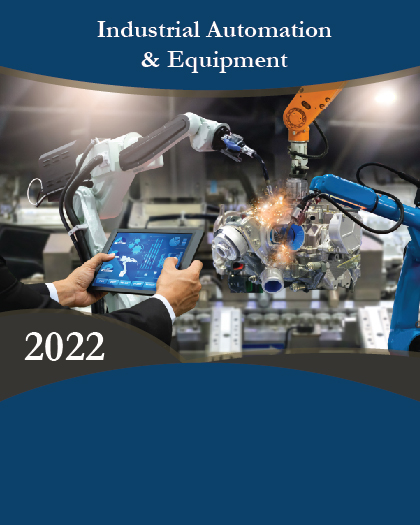
IoT in Discrete Manufacturing Market - Drivers' Opportunities' Trends' and Forecasts: 2016-2022
Overview
Manufacturing is on the cusp of IT revolution. The manufacturing sector is one of the earliest adopters of automated processes and robots' and have been utilizing sensor-based technologies for decades' though without realizing their full potential. New technologies are being used not only to make the process more effective but also to radically improve visibility in manufacturing to the point where each production unit will be visible in the entire process.
Product analysis
IoT is considered as an extension of connectivity and automation' mostly in M2M communications. Under IoT' while the sensors are responsible for the generation of data' cyber-physical systems are meant to cooperate & communicate with each other and the humans in real-time. The requirement is to decentralize the decision making across the system and facilitate the cyber-physical system to take decisions on their own.
Market analysis
According to Infoholic Research' the "Worldwide IoT in Discrete Manufacturing Market" is expected to reach $49.85 billion by 2022' growing at a CAGR of around 25.1% during the forecast period 2016-2022. At present' the discrete manufacturers are facing various challenges such as shorter innovation cycle' high resource volatility' customer expectations and competition in terms of differentiation. The manufacturing organizations have prioritized technology-driven innovation to address these challenges. Thus' advanced data processing technologies' analytical forecasting models' and IoT are likely to drive significant change in the manufacturing industry in the next 5-10 years.
Technology analysis
Middleware is an important prerequisite for the organizations opting for IoT across the entire manufacturing process. It acts as an interface between various IoT components and can even connect complex programs. Cloud & Fog platforms with an IoT operating system is another prerequisite to drive the performance and optimization of the processes. Platforms available in the form of PaaS help the developers in the programming of applications and integrating other applications and services. Applications which are relevant to be deployed on these platforms are predictive maintenance' resource optimization' and energy data management. Analytics & data visualization comes bundled with these platforms and are necessary to predict and analyze asset performance and act accordingly.
Regional analysis
At present' North America holds the largest share in the IoT in discrete manufacturing market. The region has a significant presence of manufacturers in discrete manufacturing and a well-developed IoT ecosystem. It also receives good support from the respective central governments and have well planned IoT policies and regulations in place to support the industry. Europe has taken the lead for the development of technology and is likely to register a significant growth rate in the next 5-10 years. The big economies of Europe have experienced Y-o-Y decline in their manufacturing revenues in the past 5 years. As such' rejuvenating the existing manufacturing base remains a top priority for Europe. Asia Pacific is an emerging market for manufacturing and is registering a stable growth rate in the region' more significantly in India and China. The players in the region would be investing in IoT to address the competition in the exports market and to safeguard the manufacturing interests of their respective countries. The central governments in these economies have strategized IoT as a part of the digital economy and would be making significant investments in IoT applications throughout the region.
Key players
The key players in the IoT in discrete manufacturing market are the major IT organizations (hardware and software)' pure IoT players' and the major players in manufacturing. The list includes IBM' Microsoft' PTC' Cisco' Zebra Technologies' Stanley Black and Decker' SAP' Wipro' TCS' Siemens' GE' Rockwell Automation' Schneider Electric and ABB. Several of these players are conglomerates and consider IoT as a major part of their strategic business plans.
Competitive analysis
There is a presence of global conglomerates in IT and manufacturing' pure IoT players as well as various start-ups with innovative solutions' in the IoT in discrete manufacturing market. The major vendors and conglomerates in the market have a well-developed ecosystem' which includes various technology partners' resellers' and strategic business partners. Thus' these players have a competitive advantage when it comes to addressing the need of the market. However' the needs of the manufacturers keep on growing day by day and are open to invest in innovative solutions available from small players as well. IoT start-ups have garnered around $8 billion in venture investments over the past 6 years. In addition' few of the start-ups in IoT manufacturing are also being funded by industrial tech organizations (for instance' SmartCloud being funded by Rockwell Automation).
Benefits
IoT is capable of addressing the challenge of growing complexities in supply chain networks' in achieving operational efficiencies' and reducing operational costs. In addition' lean manufacturing has become a common practice among manufacturers who believe that IoT could provide required agility & flexibility across the production' and supply chain environments. In a digital manufacturing environment' everything is likely to revolve around cyber-physical systems and highly capable sensors. Such a system would provide complete visibility of the value chain and control capabilities from remote locations which are considered as the major requirements to move towards smart manufacturing. As such' IoT forms a major part of the Industry 4.0.
Key stakeholders
Manufacturers' logistics players' managed service providers' system integrators' consulting agencies' network providers' cloud service providers' software providers' policy makers' investor community' university researchers' blog writers' and technology magazines.
Region/Country Cover in the Report
North America'Canada'Europe- UK'Germany'France'Netherlands'Sweden'Switzerland'Asia Pacific-India'Japan'China'South Korea'Australia
Middle East and Africa' Latin America-Brazil'Mexico.
Key Players Covered in the Report
PTC'Cisco Systems Inc'Wipro LTD'Rockwell Automation'Siemens AG'ABB Ltd'General Electric
IBM'Konux'Veniam.
























